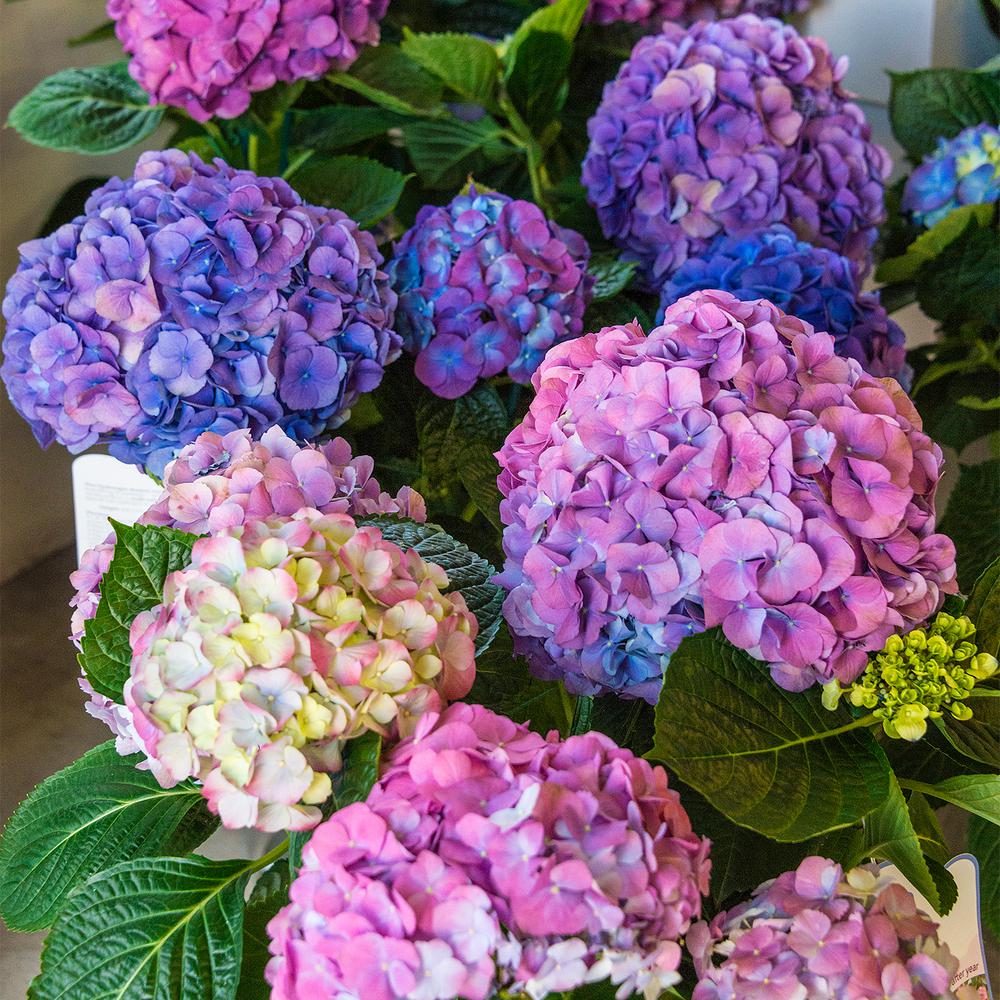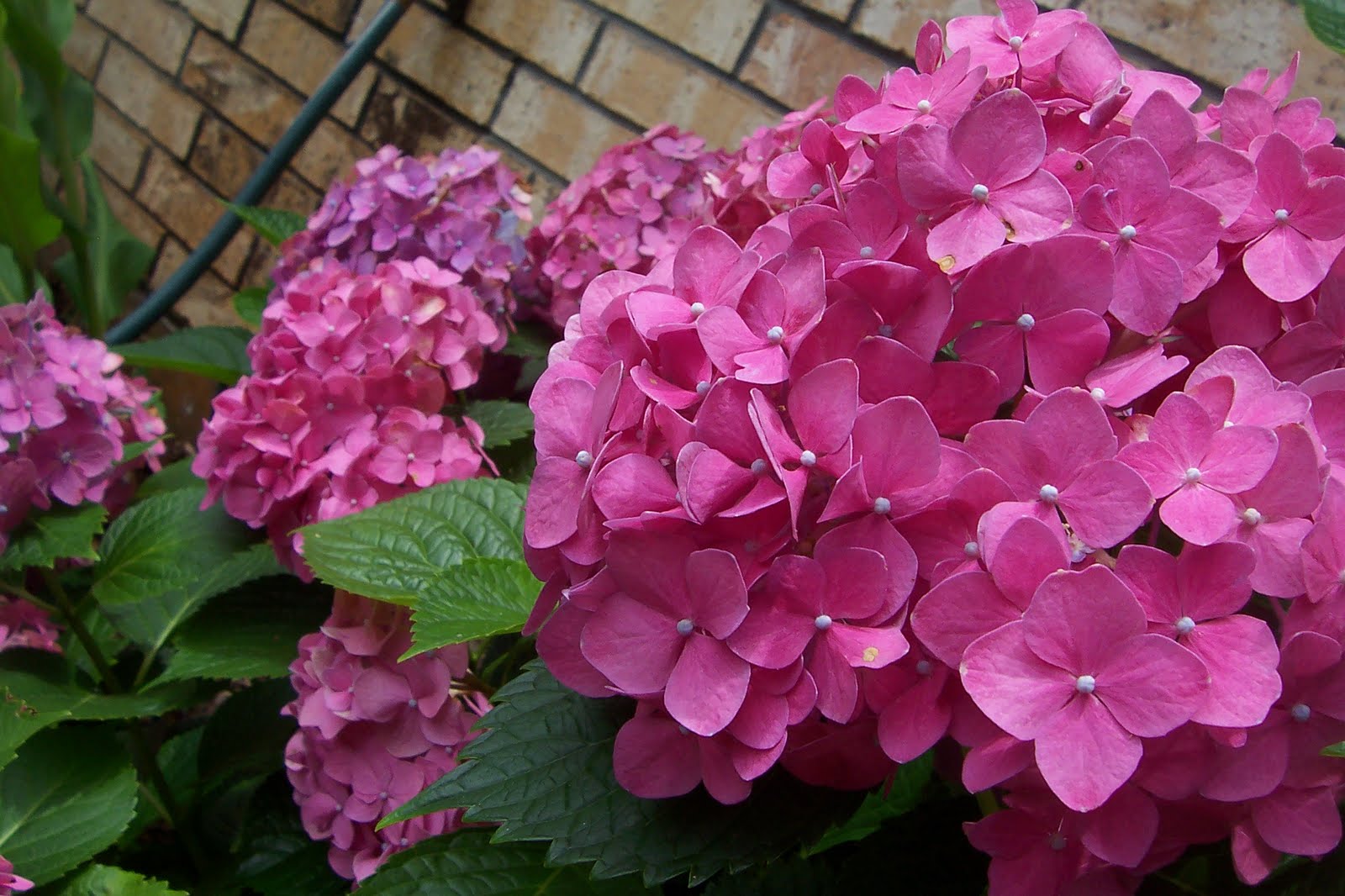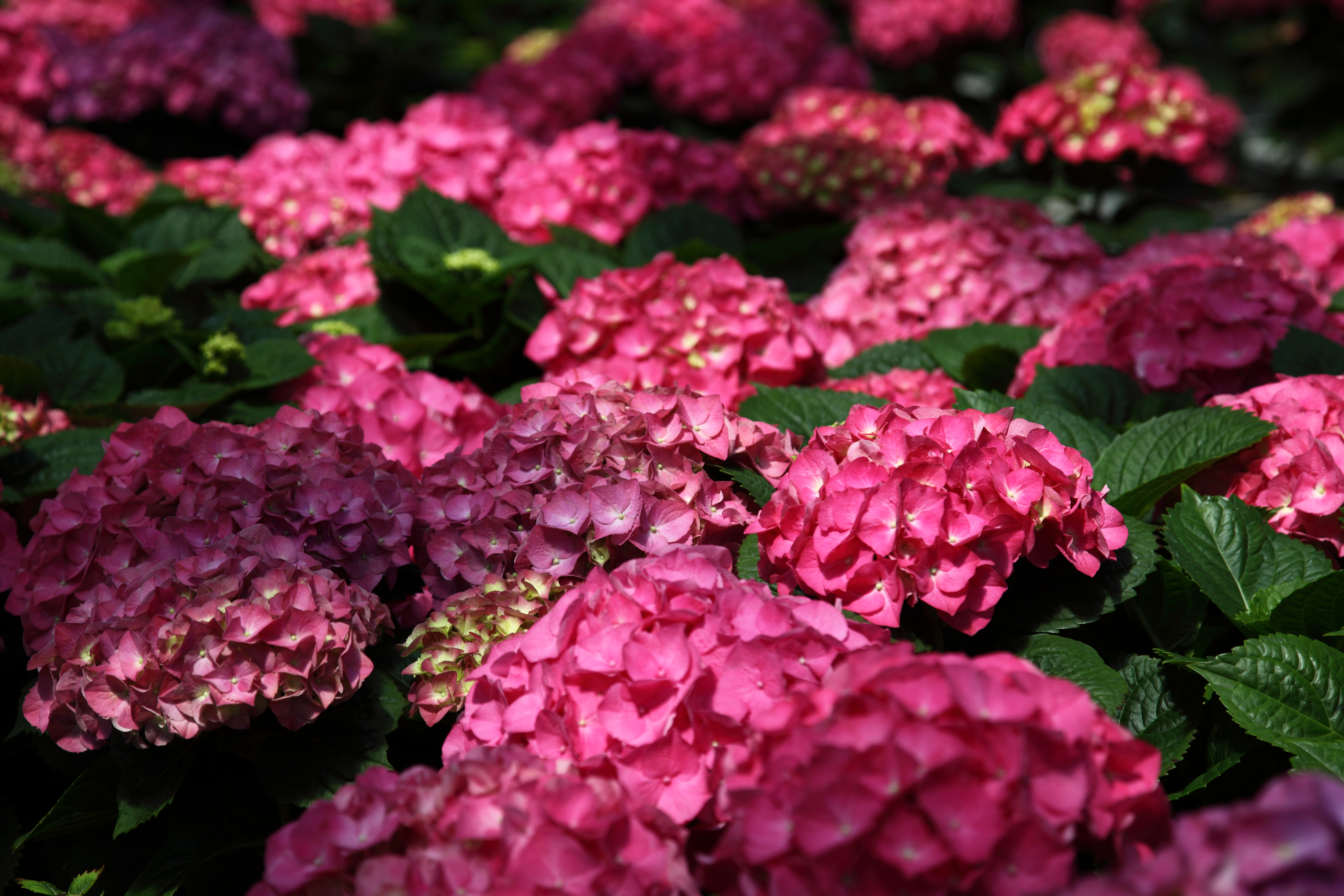
Hydrangea macrophylla – (bigleaf hydrangea) southeast Japan, southern China.Hydrangea hydrangeoides – Ulleungdo, Japan, Kurils.Hydrangea heteromalla – Himalaya, west and north China.Hydrangea glaucescens – China, Myanmar and Vietnam.Hydrangea cinerea – (ashy hydrangea) eastern United States.Hydrangea arborescens – (smooth hydrangea) eastern North America.Hydrangea anomala – (climbing hydrangea) Himalaya, southwest China.This is caused by a color change of the flower pigments in the presence of aluminum ions which can be taken up into hyperaccumulating plants. serrata cultivars, the flower color can be determined by the relative acidity of the soil: an acidic soil (pH below 7), will have available aluminum ions and typically produce flowers that are blue to purple, whereas an alkaline soil (pH above 7) will tie up aluminum ions and result in pink or red flowers. In these species, floral color change occurs due to the availability of aluminum ions, a variable which itself depends upon the soil pH.

macrophylla), they can be blue, red, or purple, with color saturation levels ranging from the palest of pinks, lavenders & powder blues, to deep, rich purples, bordeauxs, and royal blues. In other words, while the hue of the inflorescence is variable dependent upon cultural factors, the color saturation is genetically predetermined. White hydrangeas cannot be color-manipulated by soil pH because they do not produce pigment for color. As the graph depicts, soil with a pH of 5.5 or lower will produce blue flowers, a pH of 6.5 or higher will produce pink hydrangeas, and soil in between 5.5 and 6.5 will have purple hydrangeas. Hydrangea flower color can change based on the pH in soil. Hydrangea flower color changes based on the pH in soil. A wilted hydrangea may have its hydration restored by first having its stem immersed in boiling water as the petals of the hydrangea can also absorb water, the petals may then be immersed, in room-temperature water, to restore the flower's hydration. Hydrangea flowers, when cut, dehydrate easily and wilt very quickly due to the large surface area of the petals. The flowers of some rhododendrons and viburnums can appear, at first glance, similar to those of some hydrangeas. In contrast, lacecap flowers bear round, flat flowerheads with a center core of subdued, small flowers surrounded by outer rings of larger flowers having showy sepals or tepals. Mophead flowers are large round flowerheads resembling pom-poms or, as the name implies, the head of a mop. There are two flower arrangements in hydrangeas with corymb style inflorescences, which includes the commonly grown "bigleaf hydrangea"- Hydrangea macrophylla. Plants in wild populations typically have few to none of the showy flowers, while cultivated hydrangeas have been bred and selected to have more of the larger type flowers.

These showy flowers are often extended in a ring, or to the exterior of the small flowers. Typically the flowerheads contain two types of flowers: small non-showy fertile flowers in the center or interior of the flowerhead, and large, sterile showy flowers with large colorful sepals (tepals). Hydrangea flowers are produced from early spring to late autumn they grow in flowerheads ( corymbs or panicles) most often at the ends of the stems. This led to people believing Lepaute's name was Hortense, but the Larousse remarks that this is erroneous, and that the name probably came from hortus, garden. However, the flower's accepted name later became Hortensia. Philibert Commerson attempted to name the flower Lepautia or Peautia after Lepaute. The earlier name, Hortensia, is a Latinised version of the French given name Hortense, honoring French astronomer and mathematician Nicole-Reine Hortense Lepaute.

Hydrangea is derived from Greek and means ‘water vessel’ (from ὕδωρ húdōr "water" + ἄγγος ángos or αγγεῖον angeîon "vessel"), in reference to the shape of its seed capsules. The flowers of hydrangea act as natural pH indicators, sporting blue flowers when the soil is acidic and pink ones when the soil is alkaline. They can be either deciduous or evergreen, though the widely cultivated temperate species are all deciduous. Most are shrubs 1–3 m (3 ft 3 in – 9 ft 10 in) tall, but some are small trees, and others lianas reaching up to 30 m (100 ft) by climbing up trees. By far the greatest species diversity is in eastern Asia, notably China, Korea, and Japan. Hydrangea, ( / h aɪ ˈ d r eɪ n dʒ i ə/) commonly named the hortensia, is a genus of more than 75 species of flowering plants native to Asia and the Americas.

For other uses, see Hydrangea (disambiguation) and Hortensia (disambiguation).


 0 kommentar(er)
0 kommentar(er)
